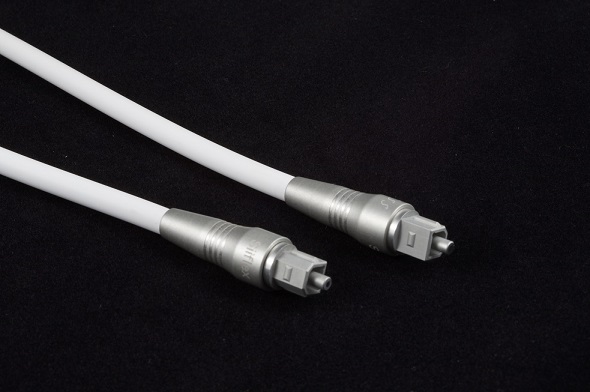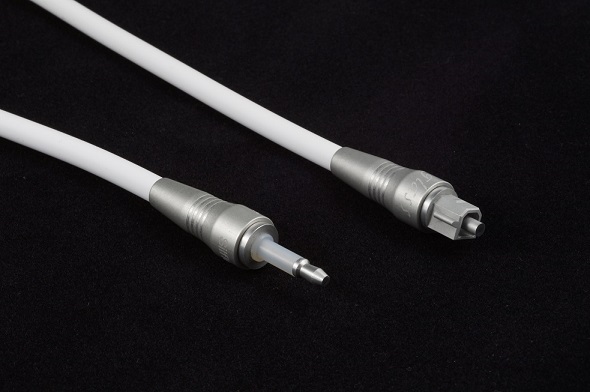D
Deleted member 15865
Guest
Hi guys,
The choice of digital audio cable is one that we all have to make if we separate our source (say CD transport or streaming device) from our DAC. One of the fundamental choices here is which technology we go with - the traditional coaxial (usually copper based) or the more recent optical (usually high quality plastic, or better, glass). While I don’t claim what I write here to be definitive or necessarily true across all systems, I would like to share my experience and subjective assessment of the two in my system.
I have been using the Nordost Silver Shadow - a highly rated coaxial (75 ohm) digital cable in my system for long now and have been quite happy with the same. In the past I did try a cheaper optical from Amazon but discarded it immediately. So I didn’t have a serious comparison between the two modes till now.
Recently I purchased Lifatec Glass optical cable - which is again highly rated, and I’d think in the same price range category as the Silver Shadow. So, these are comparable. My assessment is based on these two.
To begin, let me say both these are stupendous and one won’t go wrong with either. In terms of performance both are top notch. But then we don’t stop there, right? We want to know the specific differences. So here’s what I hear.
The coaxial shines with vocals and adds an X factor to the treble. Not a coloration exactly, but as I could decipher, it has to do with the the decay. The decay is slower, leading to more sustained tone with the coaxial. Naturally this makes the treble (cymbals etc) propagate more in the air giving the brilliance (not brightness). And the same also makes the vocals more melodious, more soulful. The coaxial therefore is capable of producing a more emotional impact on the listener. Some may say that coaxial also colors the tone, but that has not been my experience with this cable which does an equal job across all parts of the spectrum.
The optical on the other hand, has a relatively faster decay. It’s what I’d term as being more precise with the timing. Now, that doesn’t do much when the material you are playing is vocal heavy -eg soul, country, old Hindi or ghazal etc. In fact these are the genres where the melodiusness of the coaxial cable makes it preferable (at least for me). However, on any music that is rhythm heavy or has fast rhythm, I find the optical’s strengths come to play. For example in fusion or drut classical. This is where the optical starts doing justice to the drums and percussions. And in genres which has a lot of instruments, especially rhythm instruments, the optical starts edging out the coaxial as a cable of preference. This includes fusion and symphonic western classical. Rock could lie anywhere between the two depending upon whether it is soft or hard rock. The optical made the drums sound taut and crisp especially when they go fast making the listening experience more enjoyable. In comparison, the coaxial starts losing differentiation at higher speeds.
Another less prominent, but still distinct impression, which could be related to the one above is that the vocals and mids stand ahead in the soundstage with the coaxial giving a more holographic sound, while the drums start coming to the fore in the optical (seriously, though I don’t know why.. may be due to their distinctness) as the rhythm gets going giving a more concert like feel.
So, based upon my experience of the two, I find both the coaxial and the optical have their own areas of strength and it’s worth having both in the system if the equipment have the provision. It is fairly easy for me to switch from one to another with the press or two buttons on the remote. I can switch to coaxial for songs/albums (I usually play entire album at a time) which are lyrical and emotional, relatively slower and less busy. And switch over to optical for rhythm rich, fast and busy (many instruments) music. It is great to have that choice.
Of course as said earlier, my comparison is subjective (to my listening and to the rest of my system). But given that the two candidates are pretty capable ones, there might be some ounce of representation of the camps they belong to.
I’d also like to hear from those of you who have compared the sound from (comparable) coaxial and optical digital cables in the past or those of you who use both interchangeably. Does your experience correlate with mine in any way? Or if different, what’s it? The idea is to share and learn and in the process make the quest richer.
The choice of digital audio cable is one that we all have to make if we separate our source (say CD transport or streaming device) from our DAC. One of the fundamental choices here is which technology we go with - the traditional coaxial (usually copper based) or the more recent optical (usually high quality plastic, or better, glass). While I don’t claim what I write here to be definitive or necessarily true across all systems, I would like to share my experience and subjective assessment of the two in my system.
I have been using the Nordost Silver Shadow - a highly rated coaxial (75 ohm) digital cable in my system for long now and have been quite happy with the same. In the past I did try a cheaper optical from Amazon but discarded it immediately. So I didn’t have a serious comparison between the two modes till now.
Recently I purchased Lifatec Glass optical cable - which is again highly rated, and I’d think in the same price range category as the Silver Shadow. So, these are comparable. My assessment is based on these two.
To begin, let me say both these are stupendous and one won’t go wrong with either. In terms of performance both are top notch. But then we don’t stop there, right? We want to know the specific differences. So here’s what I hear.
The coaxial shines with vocals and adds an X factor to the treble. Not a coloration exactly, but as I could decipher, it has to do with the the decay. The decay is slower, leading to more sustained tone with the coaxial. Naturally this makes the treble (cymbals etc) propagate more in the air giving the brilliance (not brightness). And the same also makes the vocals more melodious, more soulful. The coaxial therefore is capable of producing a more emotional impact on the listener. Some may say that coaxial also colors the tone, but that has not been my experience with this cable which does an equal job across all parts of the spectrum.
The optical on the other hand, has a relatively faster decay. It’s what I’d term as being more precise with the timing. Now, that doesn’t do much when the material you are playing is vocal heavy -eg soul, country, old Hindi or ghazal etc. In fact these are the genres where the melodiusness of the coaxial cable makes it preferable (at least for me). However, on any music that is rhythm heavy or has fast rhythm, I find the optical’s strengths come to play. For example in fusion or drut classical. This is where the optical starts doing justice to the drums and percussions. And in genres which has a lot of instruments, especially rhythm instruments, the optical starts edging out the coaxial as a cable of preference. This includes fusion and symphonic western classical. Rock could lie anywhere between the two depending upon whether it is soft or hard rock. The optical made the drums sound taut and crisp especially when they go fast making the listening experience more enjoyable. In comparison, the coaxial starts losing differentiation at higher speeds.
Another less prominent, but still distinct impression, which could be related to the one above is that the vocals and mids stand ahead in the soundstage with the coaxial giving a more holographic sound, while the drums start coming to the fore in the optical (seriously, though I don’t know why.. may be due to their distinctness) as the rhythm gets going giving a more concert like feel.
So, based upon my experience of the two, I find both the coaxial and the optical have their own areas of strength and it’s worth having both in the system if the equipment have the provision. It is fairly easy for me to switch from one to another with the press or two buttons on the remote. I can switch to coaxial for songs/albums (I usually play entire album at a time) which are lyrical and emotional, relatively slower and less busy. And switch over to optical for rhythm rich, fast and busy (many instruments) music. It is great to have that choice.
Of course as said earlier, my comparison is subjective (to my listening and to the rest of my system). But given that the two candidates are pretty capable ones, there might be some ounce of representation of the camps they belong to.
I’d also like to hear from those of you who have compared the sound from (comparable) coaxial and optical digital cables in the past or those of you who use both interchangeably. Does your experience correlate with mine in any way? Or if different, what’s it? The idea is to share and learn and in the process make the quest richer.
Last edited by a moderator:



